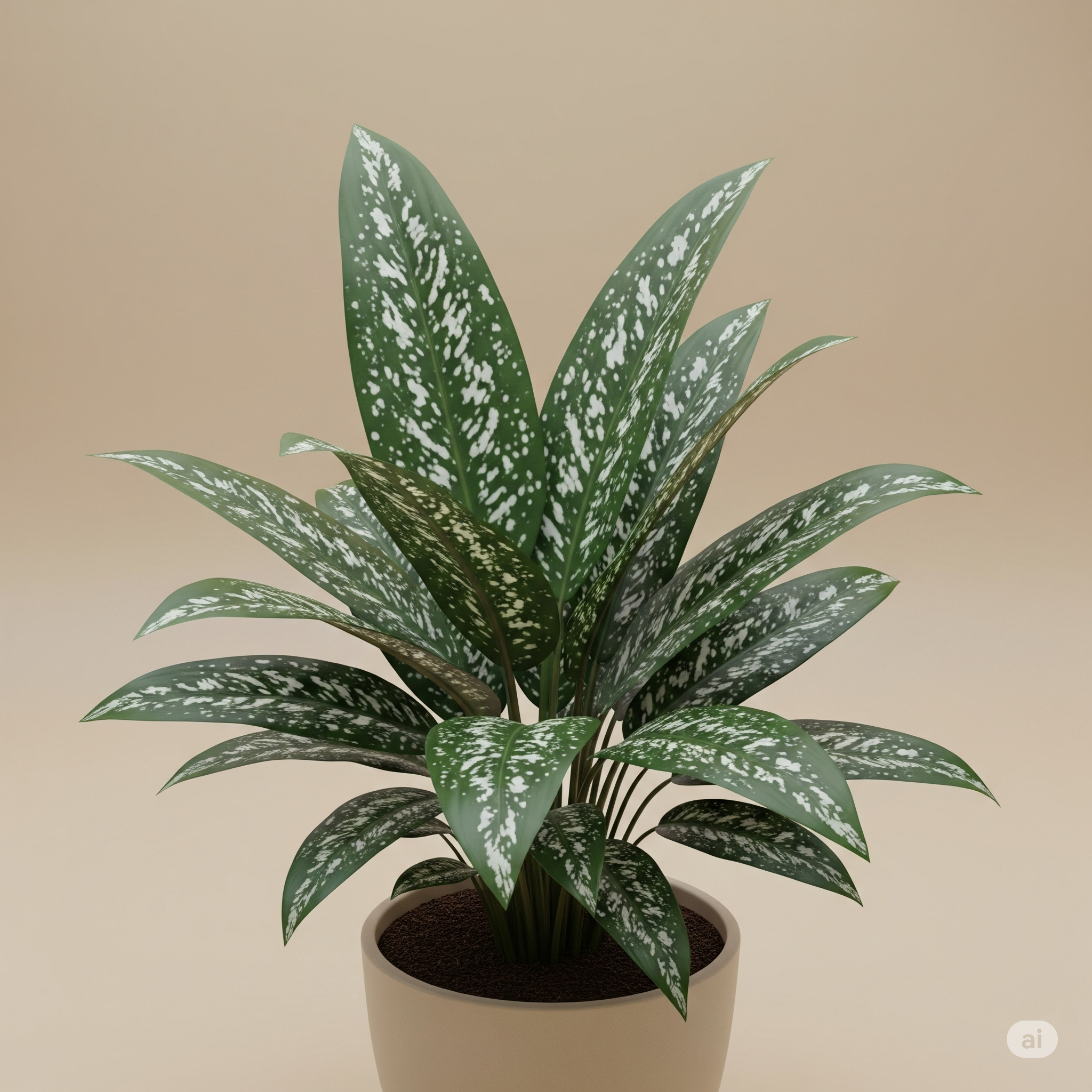Aspidistra 'Milky Way'

Scientific name: Aspidistra lurida 'Milky Way'
☘️ Toxicity: Safe for cats
☀️ Ideal light: Medium to low indirect light
💧 Watering: Moderate; let the top 2–3 cm of soil dry between waterings
Aspidistra 'Milky Way' is a slow-growing, shade-loving plant famous for its dark green leaves covered in tiny white speckles that resemble a starry night sky. Exceptionally hardy and tolerant of low light, it’s ideal for interiors and offices — and completely safe for cats.
Essential care
- Light: Thrives in low to medium indirect light. Avoid harsh sunlight, which can scorch the leaves.
- Water: Water moderately and allow partial drying between waterings. Reduce frequency in winter.
- Substrate: Rich, well-draining mix — 2 parts potting soil, 1 part organic matter, 1 part coarse sand or perlite.
- Environment: Prefers stable indoor temperatures (18–26 °C / 64–79 °F) and moderate humidity.
- Fertilization: Apply diluted balanced fertilizer (10-10-10) every 45–60 days during active growth.
- Maintenance: Remove older yellowed leaves at the base to keep the plant neat and healthy.
Pests and how to handle them
- Scale insects: Remove manually or with cotton soaked in alcohol 70%.
- Mealybugs: Wipe leaves with mild soap solution or neem oil spray.
- Root rot: Caused by overwatering; use a pot with good drainage.
Propagation
- Division: The easiest method — divide clumps with at least 2–3 rhizomes and replant immediately.
- Seeds: Rarely used due to slow germination.
Cat safety
- Classification: Non-toxic to cats (ASPCA confirmed).
- Best practice: Ideal for households with pets thanks to its durability and resistance to nibbling.
- Bonus: Helps purify indoor air by trapping dust and improving oxygen quality.
💡 The cultivar name “Milky Way” was inspired by the unique white speckles on its leaves — a natural pattern that recalls the galaxy’s stars.
Frequently asked questions
- Can it live in very low light? Yes, it’s one of the most tolerant plants for shaded interiors.
- Does it need pruning? Only to remove old or damaged leaves.
- How long does it live? It’s a long-lived plant, often thriving for decades with minimal care.
Quick checklist
- 🌥️ Medium to low indirect light
- 💧 Moderate watering
- 🪴 Well-draining, organic-rich substrate
- ✂️ Remove yellow leaves at the base
- 🐾 Safe for cats